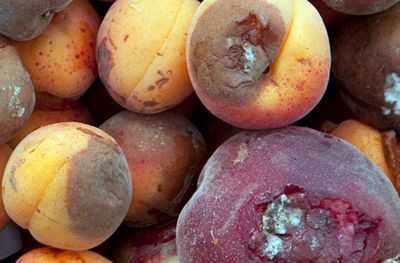What Causes Apricot Rhizopus Rot?
Rhizopus rot of apricot trees is a fungal disease caused by the fungus Rhizopus stolonifer. It affects stone fruits such as peaches, nectarines, and apricots, and it most commonly strikes when fruit is ripe, often after it has been harvested or allowed to get overly ripe on the tree. The fungal spores live and thrive in debris on the orchard floor, especially in rotting, fallen fruit. Over the course of the growing season, spores will build up and eventually become airborne, spreading through the fruit on the tree. The fungus spreads most quickly in wet, warm conditions, with an ideal temperature of 80 F. (27 C.).
Recognizing Rhizopus Rot of Apricot Symptoms
Early signs of rhizopus rot are small, brown lesions that quickly darken to black and produce fluffy, whiskered strands that spread across the surface of the fruit and darken from white to gray to black over time. Rhizopus is similar in appearance to brown rot, another disease that plagues apricots. Unlike those with brown rot, however, apricots with rhizopus rot will easily slough their skin off if finger pressure is applied. This is a good tip for diagnosing the two diseases correctly.
Rhizopus Apricot Control
Since rhizopus rot only affects very ripe apricots, it’s relatively easy to time the treatment correctly. Shortly before harvesting, you can spray your trees with fungicide marked for rhizopus rot control. This should keep the spores in check. Note that this is effective only if applied before harvest. A very effective and easy post-harvest solution is refrigeration. Rhizopus spores will not grow or spread at temperatures lower than 40 F. (4 C.). By chilling apricots immediately after harvest, it’s possible to protect fruit even if it has already been infected.
